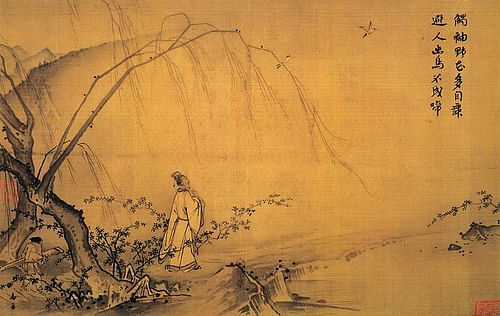For many people, the phrase ‘Chinese Painting’ can be rather confusing. This is because it covers a vast range of works starting from classical paintings from the 20th century to more contemporary artworks. These paintings, which employ age-old techniques, themes, and materials, are influenced by several factors including Taoism & Confucianism as well as the lifestyle of the artists.
Chinese paintings are more about reflecting styles and ethnicities in the form of using different characters, flowers, birds, and landscapes as the theme. This, along with the fact that it is more associated with water-based painting techniques instead of acrylic and oils sets it apart from other forms of painting. Below are three important things that you need to know about this unique form of art.
Ink And Wash Painting
If we look at artworks by top Chinese art collectors like John Dodelande, it is clear that ink and brush paintings are an integral part of Chinese history and tradition. First developed during the Tang dynasty by Wei We, this type of painting makes the use of pure ink along with tools that are widely used in calligraphy.
The intricate gradation in these paintings with the use of black, grey, and white, along with the artistic variations of the brushstrokes have contributed to its fame. The most common subjects showcased in this type of painting include the orchid, bamboo, chrysanthemum, and plum blossom. The use of the above four plants highlights harmony with nature, which is a part of the philosophy of Taoism.
Chinese Landscape Painting
Developed during the Tang dynasty, landscape paintings are the most representative form of Chinese art forms. Traditionally, the term landscape was used to indicate mountains and water. But this concept was refined by later artists with the incorporation of different ideas like still and floating water, high mountains, and so on.
The motive behind these paintings was to put forward the feelings of spirituality that are associated with mountains and water. This was a way of accommodating the ideas of Taoist advisors who put emphasis on the need for spiritual identification.
The Use Of Colors In Chinese Paintings
Chinese artists did not emphasize much on colors in their paintings. Instead, their focus was more on including a faded wash in the artwork. Still, the Chinese ink modulation technique is not considered to be a type of modulation from the perspective of western intellectuals. Yet, the Buddhist hanging portraits and the woven silk in official lobes are examples that show the usage of strong hues by Chinese artists.
The Chinese mural paintings hit a new level of finesse that had never been seen before. These paintings showcased strong linear interactions and regular character changes along with the use of special colors. A famous example is the Kuan-Yin painting that dates back to 1551.
Summing Up
Chinese paintings showcase a variety of techniques, and the wonderful collections by art collectors like John Dodelande only serve as proof of this fact. The Chinese art forms are strikingly different from their Western counterparts, and the above three things are among many others that differentiate the two.



